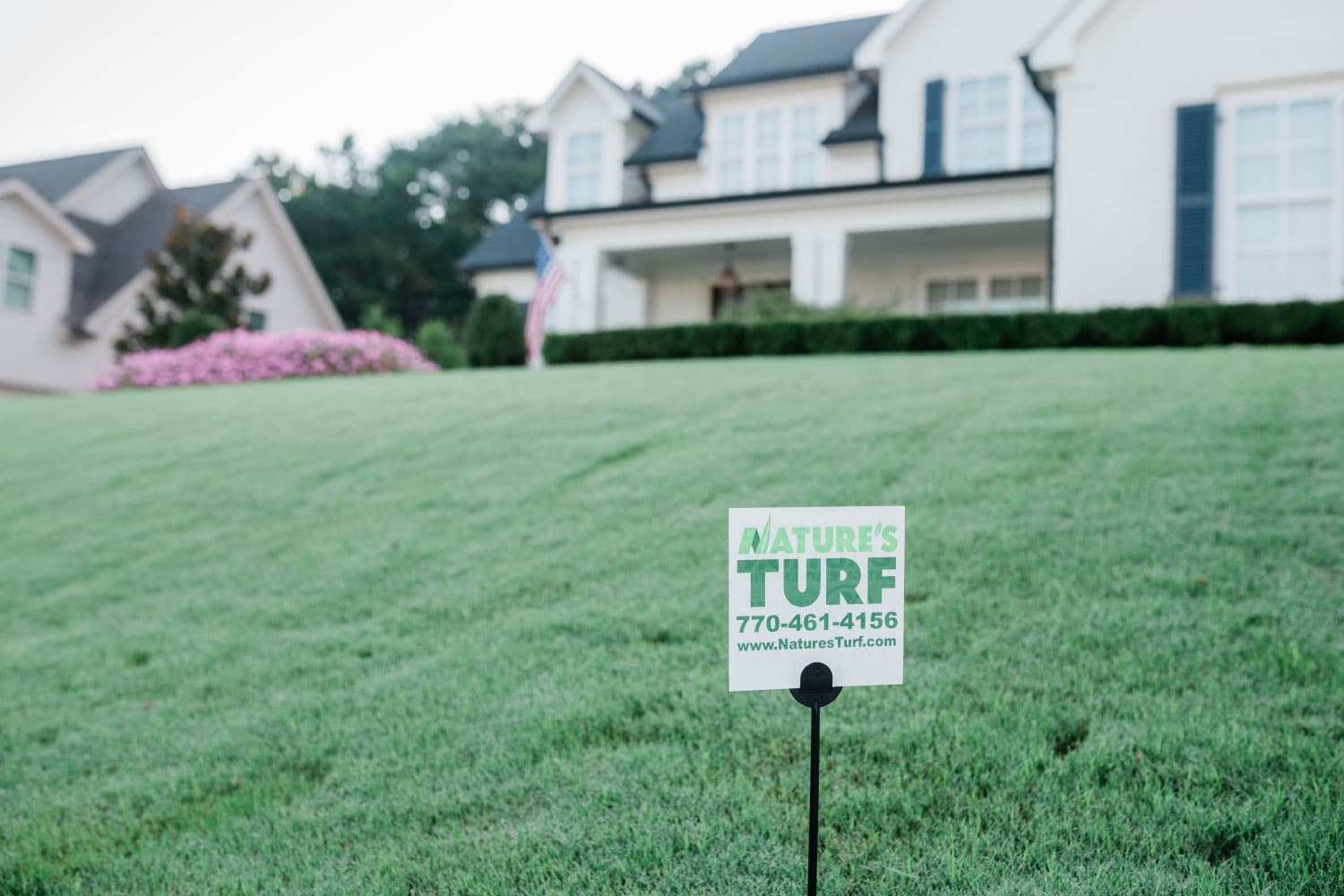Regular readers of our Nature’s Turf blog posts know that we talk about mowing a lot. There’s a reason for that. Great turfgrass cannot be grown without good mowing practices. Fertilization and weed control are necessary to achieve a desirable lawn, but they can either be magnified or mitigated by how well a lawn is mowed. People that mow their lawns weekly at an appropriate height can get frustrated if they aren’t getting the color and density they expect. There’s a likely culprit sitting right under that mower deck: dull blades (cue scary music).
How Do Mower Blades Get Dull?
The simple answer is: repeated use. But, wait. Grass blades are soft, so how could they possibly dull the blades of a mower? In the same way a pocket knife can be dulled from repeated use cutting open boxes and scissors can be blunted by cutting paper, the edge of a mower blade becomes significantly compromised with repeated use. Grass blades may feel soft, but they are full of cellulose, the same material that makes up the wood of a tree trunk. Different species also have varying amounts of silica, which is akin to sand and glass. Repeated impacts with grass blades will blunt a mower blade simply from repetitive use–and that’s before any of the whoopsies happen.
The full answer is: repeated use and whoopsies. The whoopsies I refer to are accidental impacts our mowers make with objects that aren’t turfgrass. You know what I’m talking about. We’ve all been trying to cut close to a sidewalk or curb, or we’ve accidentally rolled off the edge of our driveway and heard that uncomfortable tinging noise. That noise is the sound of your blades impacting concrete, which will absolutely blunt the edges or create burrs. The same thing happens when you run over roots, large sticks, pine cones, rocks, or any other hard objects.
How Do Dull Blades Injure Turf?
When sharpness is compromised, the blades no longer cut well. Instead, they rip or bludgeon turf, creating immense bruising and injury instead of clean cuts. This can be observed by looking at individual blades of grass a couple of days after a cut. Turf cut with sharp blades will have a small, fine tan margin at the cut point. This is what you want. The small surface area of the cut point is easily healed by the plant.
Most home lawns are cut with homeowner-grade rotary mowers. These are great machines that spin a blade or blades at a velocity sufficient to cut the turf. Larger mowers utilize more blades. Commercial mowers typically spin them faster. In any case, they are typically spinning a blade meant to cut and mulch clippings. Unlike scissors or pruning shears that have two blades that bed against one another, a rotary mower is dependent on blade speed and sharpness to cut effectively.
Ripped and torn grass blades often have long, uneven cut points. As these turn tan, they actually become noticeable as the entire lawn loses its luster. Each of these individual blades contributes to the overall aesthetic. Beyond detractions in appearance, poor cut quality is also tough on plant health. Larger injuries are more difficult to heal. Plants lose valuable moisture and nutrition, and they burn lots of energy attempting to repair the ripped blades. That energy is better used to produce roots, spread with stolons, or create new shoots. It could also be stored in the rhizomes for dormancy or drought stress, or to fight and recover from fungal infections.
How Do I Know When to Replace My Mower Blades?
A quick visual inspection will let you know if it’s time. During the season, perform visual inspections for bluntness or burrs and take a close look at your turf to help you make this decision. If your blades are free of burrs, a simple sharpening may suffice. If you aren’t comfortable doing this, mower repair shops typically offer this service. If you do have burrs, or your blades have been sharpened too many times, those same mower shops likely stock replacements.
Important Takeaways:
- Great turfgrass cannot be grown without good mowing practices.
- In the same way a pocket knife can be dulled from repeated use cutting open boxes and scissors can be blunted by cutting paper, the edge of a mower blade becomes significantly compromised with repeated use.
- Accidental impacts with concrete, roots, and debris can create burrs or blunt blades.
- Poorly cut turf not only reduces the visual beauty of your lawn but also compromises plant health.
- During the season, perform visual inspections for bluntness or burrs and take a close look at your turf to help you determine if it’s time to sharpen or replace blades.
- If you’re struggling with the color of your lawn, and are unsure what the cause is, give us a call at 770-461-4156, or send us an email at info@naturesturf.com. Our goal is to help you achieve your dream lawn!








